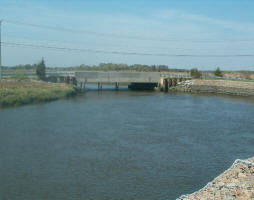 Desalination help published with WHO drinking water standards
Desalination help published with WHO drinking water standards
The World Health Organization launched the 4th edition of itsGuidelines for Drinking-Water Quality (ISBN: 978 92 4 154815 1) at the Singapore Water Week on 4 July 2011 - and also launched a separate guide for desalination.
Safe Drinking-Water From Desalination (WHO/HSE/WSH/11.03) was prepared under the auspices of the WHO Drinking-water Quality Expert Group. Its guidance focuses on chemicals and microbes of particular concern in the context of desalination.
The key chemical and microbial risks associated with major operational aspects of the desalination process, such as source water quality management, treatment, and the blending of final waters, are discussed in the context of WHO Water Safety Plan framework to guide member states in effectively managing a safe drinking-water supply from desalinated sources.
This WHO guidance document is health-focused and builds on the publicationDesalination technology: health and environmental impacts (Cotruvo et al), which covers the broader context of environmental, technical and operational aspects of desalination.
In addition to highlighting common challenges in providing safe and clean water, the new WHO drinking-water guidelines map out new solutions. For the first time, comprehensive good practice recommendations are provided for all levels, from household rainwater harvesting and safe storage through to policy advice on bulk water supply and the implications of climate change.
Recommendations are also included for
| Contact information | n/a |
|---|---|
| News type | Inbrief |
| File link |
http://www.desalination.biz/news/news_story.asp?src=nl&id=6002 |
| Source of information | desalination.biz |
| Keyword(s) | water desinfection, water filtration |
| Subject(s) | DRINKING WATER AND SANITATION : COMMON PROCESSES OF PURIFICATION AND TREATMENT , INFORMATION - COMPUTER SCIENCES , WATER DEMAND , WATER QUALITY |
| Geographical coverage | Singapore, |
| News date | 06/07/2011 |
| Working language(s) | ENGLISH |
 you are not logged in
you are not logged in





